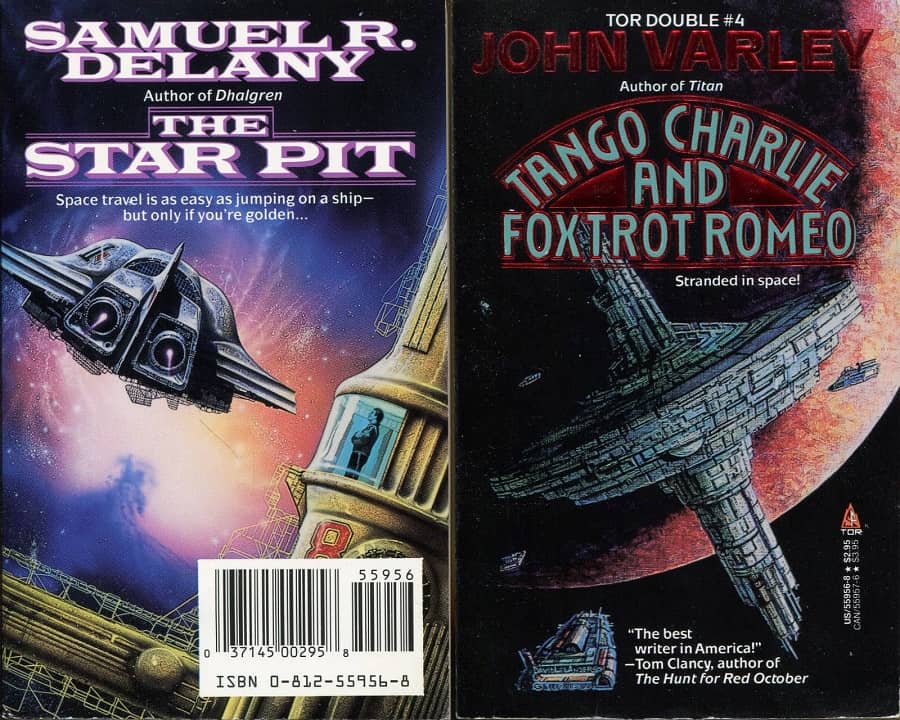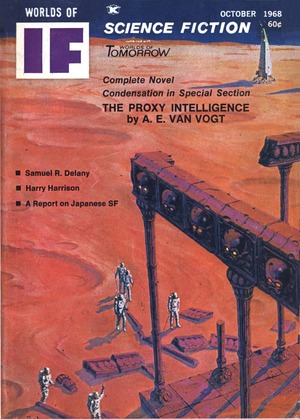Tor Doubles #4: Samuel R. Delany’s The Star Pit and John Varley’s Tango Charlie and Foxtrot Romeo

Cover for Tango Charlie and Foxtrot Romeo by David Lee Anderson
Originally published in January 1989, the fourth Tor Double included John Varley’s Tango Charlie and Foxtrot Romeo and Samuel R. Delany’s The Star Pit. Printed in the a tête-bêche format, David Lee Anderson provided the cover by Tango Charlie and Foxtrot Romeo and Tony Roberts was the artist for The Star Pit.
The Star Pit was originally published in Worlds of Tomorrow in February, 1967. It was nominated for the Hugo Award. It lost to Philip José Farmer’s “Riders of the Purple Wage” and Anne McCaffrey’s “Weyr Search,” which tied each other. Coincidentally, McCaffrey and Delany share a birthday.
Vyme, a mechanic at the titular Star Pit, serves as Delany’s narrator. Rather than start with the present day action, however, Vyme opens his narration with memories of his own childhood and his life from several years earlier. Born on the backwater Earth in New York, he talks about his childhood and the ant farm he had as a child, which would eventually break.
